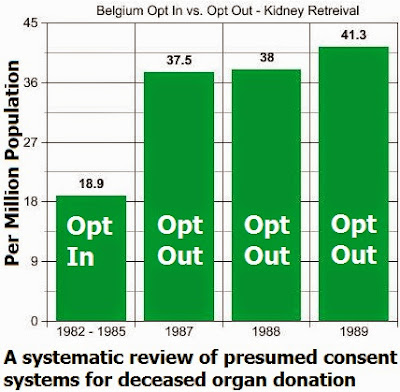Is there really a silver lining to giving epinephrine for cardiac arrest? Scott writes about organ donation as one possible silver lining.
The next time you bring one of those cardiac arrest patients in who when you follow up on them, you are told that they have “no brain activity” do not look at it as a complete loss. Ask that follow up question, “Are they going to be able to donate any organs?” You might be pleasantly surprised at what the answer is. Although it’s not exactly what we are looking for, a life might have been saved.[1]
That seems reasonable, except that it assumes that the treatment that will produce the best survival, a return to normal life, is produced with epinephrine.
Epinephrine may produce more organ donors, but that is not what we base our treatment on. We treat patients based on what is expected to produce the best outcome for them, not what is expected to produce the best/most organs for donation. Even looking at organ donation, there are many different considerations.
What produces the best organs?
What produces the most organs?
What produces the mixture of quality and quantity that seems to be best for patients?
If we want to improve organ donation rates, one thing we should consider is addressing organ donation directly – not advocating for things that might produce increased organ donation as a side effect. Changing the law from the current opt in to opt out.
With opt in – if I have not made a choice, or if anyone objects to my choice, it is presumed that I object to organ donation and my organs are discarded.
With opt out – if I have not made a choice, it is presumed that I do not object to organ donation and my organs are available to those on the organ transplant lists.
Currently, the license to drive is the indicator and there would be no reason to change that. We are asked to select this if you want to be an organ donor. We would change the question to select this if you do not want to be an organ donor.
Donations are more complex than opt in vs. opt out, but changing one thing may lead to changes in other things because of increased attention.
Here are changes in various rates of organ donation in Belgium before and after a change from opt in to opt out.
Presumed consent alone is unlikely to explain the variation in organ donation rates between different countries. A combination of legislation, availability of donors, transplantation system organisation and infrastructure, wealth and investment in health care, as well as underlying public attitudes to and awareness of organ donation and transplantation, may all play a role, although the relative importance of each is unclear.[2]
Should we assume that epinephrine really improves the likelihood of organ donation without decreasing survival from cardiac arrest? I will discuss that in Part 2.
–
Footnotes:
–
[1] The Silver Lining of Epi
February 3, 2014
EMS in the New Decade
Scott
Article
–
[2] A systematic review of presumed consent systems for deceased organ donation.
Rithalia A, McDaid C, Suekarran S, Norman G, Myers L, Sowden A.
Health Technol Assess. 2009 May;13(26):iii, ix-xi, 1-95. doi: 10.3310/hta13260. Review.
PMID: 19422754 [PubMed – indexed for MEDLINE]
Free Full Text from National Institute for Health Research.
.













Subscribe to RogueMedic.com